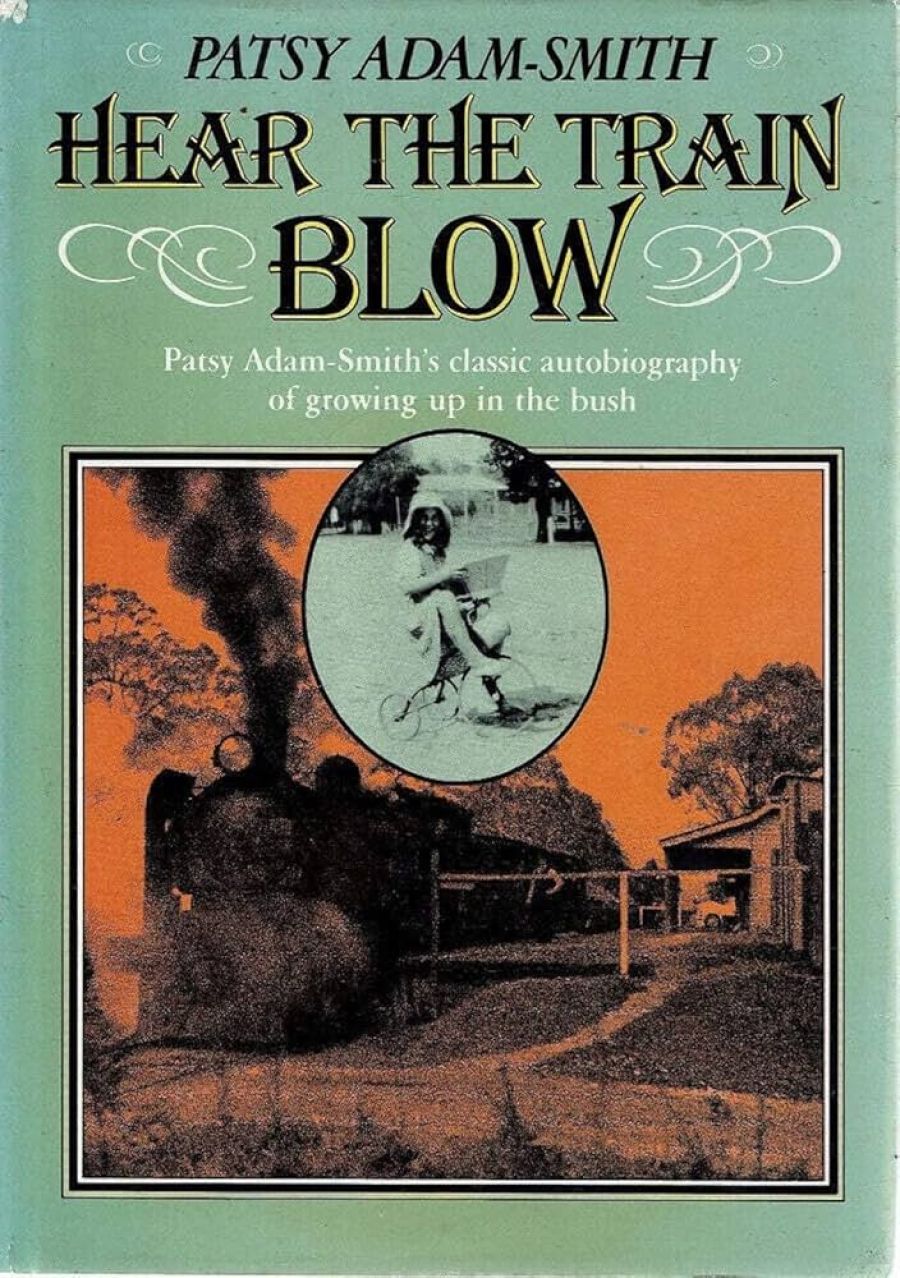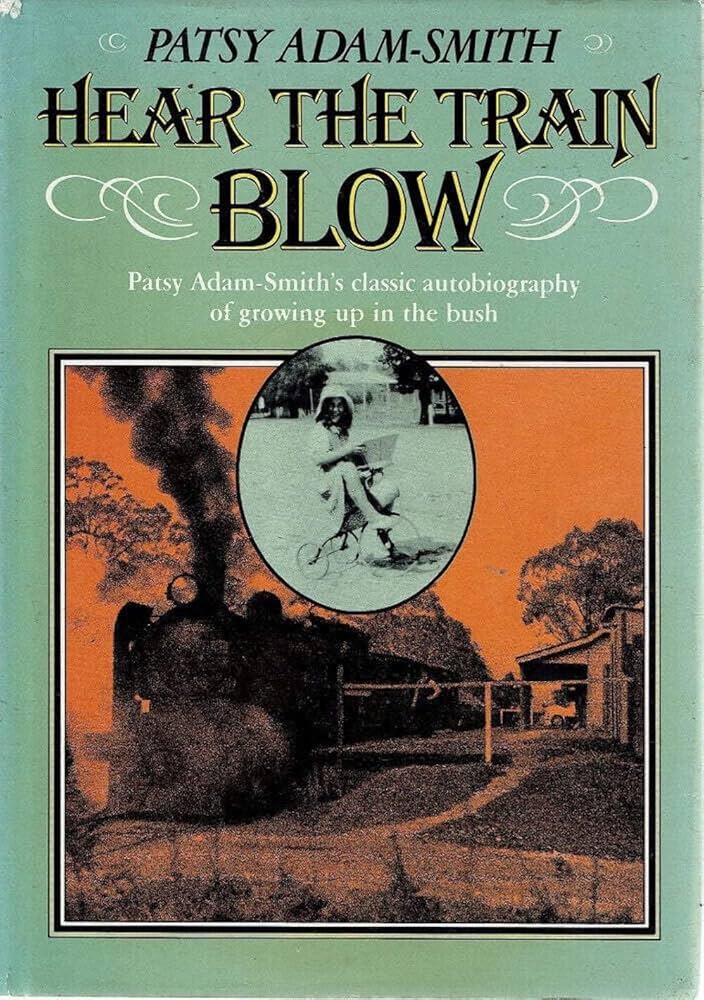
- Free Article: No
- Contents Category: Biography
- Review Article: Yes
- Article Title: A Railway Childhood
- Article Subtitle: The dispersal of the golden light
- Online Only: No
- Custom Highlight Text:
Some autobiographies are like novels, some resemble suites of lyric poems, some would seem to be educative tracts and others shade into history. From time to time one is published which reads as though a life of talk had somehow made itself over into book form. Patsy Adam-Smith’s Hear the Train Blow is certainly such a narrative, giving the impression again and again that we are not reading but sitting around enjoying a long, bright evening’s yams.
- Book 1 Title: Hear the Train Blow
- Book 1 Biblio: Nelson, 180 pp, illus., $19.95 hb
- Book 1 Cover Small (400 x 600):

- Book 1 Cover (800 x 1200):

This is not said to rubbish or belittle Patsy Adam-Smith’s delightful book. It is merely a way of observing how strikingly her youthful life has offered itself up in the form of well-told yams. The successive vignettes of her experience characteristically .have a climax, a comeuppance, a punch-line, a sting in the tail. The big boy who jabs her with his pen in the classroom of the Waaia one-teacher school promptly gets his fingers blown off by a detonator; at the Carwarp sports meeting the versatile Smiths scoop the pool; superior Joan Moran turns into a version of Miss Havisham; and after Dad’s nearly fatal accident on the rail trike, ‘His absent eye was discovered undamaged beneath his cheek bone.’
I am sure that the way in which the author’s memory has gathered past events and presented them as successive yams has been one reason for the popularity of Hear the Train Blow. As Walter Benjamin once observed, one of the things we miss most in modern, literate culture is the shape of storytelling. Here, even the chapter titles have the air of yarning about them, as well as echoing popular strains from Australian tradition: ‘The Wild Life’, ‘On the Wallaby’, ‘They’re Off’, ‘Velly Nice Fluit’, ‘Such is Life’ – they sound as though they had just popped up out of folklore.
Hear the Train Blow was first published in 1964, reappeared in an illustrated edition in 1981 and is now with us as a large, illustrated paperback, full of nostalgic illustrations, among which archival photographs are deftly interwoven with family snaps taken by Bridget Smith’s Box Brownie. In this way documentary history mingles with the colourful memories and family legends of the railway years. (On page 99 there is a perfectly incomprehensible photograph.)
Patsy Adam-Smith’s father lived the hard life of a railway navvy, while her mother was commonly both station and postmistress. The tales she tells evoke such out-of-the-way home townships as Nowingi, Waaia and Monomeath. One aspect of the book’s high spirits is noticeable in the way places and scenes are described; such adjectives as ‘golden’, ‘bright’, ‘green’, ‘lush’ and ‘warm’ abound; the narrator has a constant tendency to remember whatever was most pleasing and to censor pain or discomfort, even while reminding us that life in the depression years was hard. It is often implied that there is something peculiarly Irish about these high spirits. Certainly I cannot imagine another autobiography including a sentence quite as full of cheerful acceptance as ‘The local priest offered to teach me Latin, surely the most beautiful of all languages.’
It is in the last three chapters of Hear the Train Blow, despite the beauty of Latin, that the golden light begins to disperse a bit. Here the full force of the Depression is recorded, the narrator’s brother-in-law being done out of a job by his supposed mate and her father trying to cover up the offence out of instinctive tact. Australia is sliding towards the War, which promises to be a lively alternative to the dole; two grandmothers and the faithful old dog, Nip, have died. The stories are running out and it feels like time for an ending.
Here and there, this autobiography is a little sentimental and sometimes it runs the danger of cliche. But the life it depicts is always interesting. For many readers it will surely carry the flavour of a lost, plain, healthy, if rather rough Australia observed at curious comers of the railway world. I wonder how many of the lines that Dad Smith worked on are still running.


Comments powered by CComment